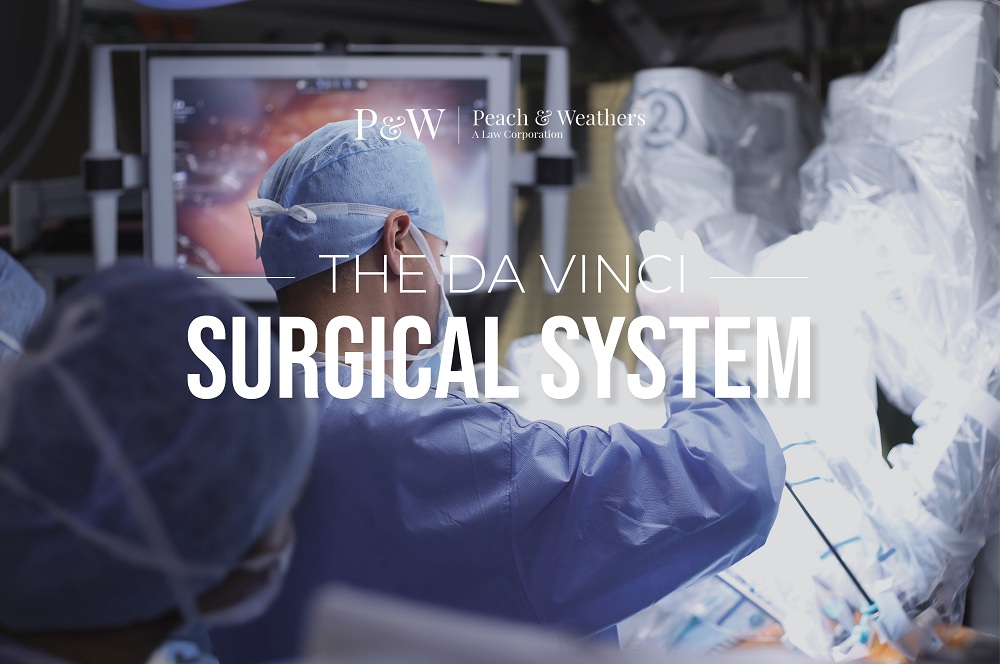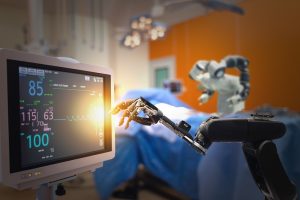
 From Wall-E to The Terminator, robots have been imagined in many ways– even attributed personalities with good and evil traits. They are considered revolutionary, futuristic, and perhaps even frightening as they enter into every realm of life. And now, they’ve even taken their place in the operating room. The da Vinci Surgical System, made by Intuitive Surgical and approved by the FDA in 2000, has turned a few heads and received a bit of criticism over the years. And in terms of medical malpractice, we may need to shift our attention to product liability with the increase of medical robots and artificial intelligence.
From Wall-E to The Terminator, robots have been imagined in many ways– even attributed personalities with good and evil traits. They are considered revolutionary, futuristic, and perhaps even frightening as they enter into every realm of life. And now, they’ve even taken their place in the operating room. The da Vinci Surgical System, made by Intuitive Surgical and approved by the FDA in 2000, has turned a few heads and received a bit of criticism over the years. And in terms of medical malpractice, we may need to shift our attention to product liability with the increase of medical robots and artificial intelligence.
What is it?
The da Vinci Surgical System, named after Leonardo da Vinci’s largely anatomically-correct and first human-like robot, is cause for conversation among medical professionals and patients alike. It is designed to facilitate surgery with minimally invasive incisions and maneuvers. While it is controlled by a trained surgeon from a separate console, its four robotic arms conduct the operation. Currently, it is primarily used for prostatectomies, cardiac valve repair, and gynecological surgical procedures. It all seems pretty futuristic, evil genius-like, and perhaps like material for a sci-fi film. However, this joining of refined human expertise and robotic technology has been met with a few complications.
Criticism:
The da Vinci Surgical System has received several points of criticism. And at the going rate of two million dollars, this robot has little room for error. A study published in the Journal of American Medical Association, the side effects, and blood loss in a robotically-performed procedure proved no better than those of a traditionally-performed surgery. The difference was only found in cost. In addition to this lack of explicit benefit, the da Vinci presents two significant flaws.
- Surgeon inexperience. This is considered a major cause of da Vinci robot injuries. While the technology associated with this surgeon-robot is challenging to learn, sufficient training is not required, nor provided to its users. Intuitive Surgical, the technology’s founding company, requires only a few training sessions, despite this being considered inadequate. Plus, few hospitals call for more than five supervised surgeries before a physician is prompted to use the da Vinci Surgical System on their own. Such improper training is believed to have led to several mishaps and mistakes during procedures.
- da Vinci malfunction. Between 2000 and 2013, the FDA’s MAUDE database listed 10,624 reports of injury or dysfunction associated with the da Vinci robotic surgery system. That includes 8,061 device malfunctions, most of which were related to electrical problems in one of its attachments. This resulted in internal burns to patients.
These flaws have been associated with several injuries and even deaths caused by a mishap during the surgery. And while the da Vinci Surgical System is considered safe, it is being reviewed as more complications arise.
Lawsuits and legal matters:
As of 2017, Intuitive Surgical faces over 100 lawsuits in local, state, and federal courts. And as such, medical malpractice now faces a matter of product liability. If you or a loved one has experienced an injury from a da Vinci Surgical Systems procedure, do not hesitate to reach out for legal support. We at Peach and Weathers, serving the Redlands and surrounding area, are prepared to offer legal counsel and advocacy in this time of hardship. Reach out today for compassionate and expert legal assistance.

